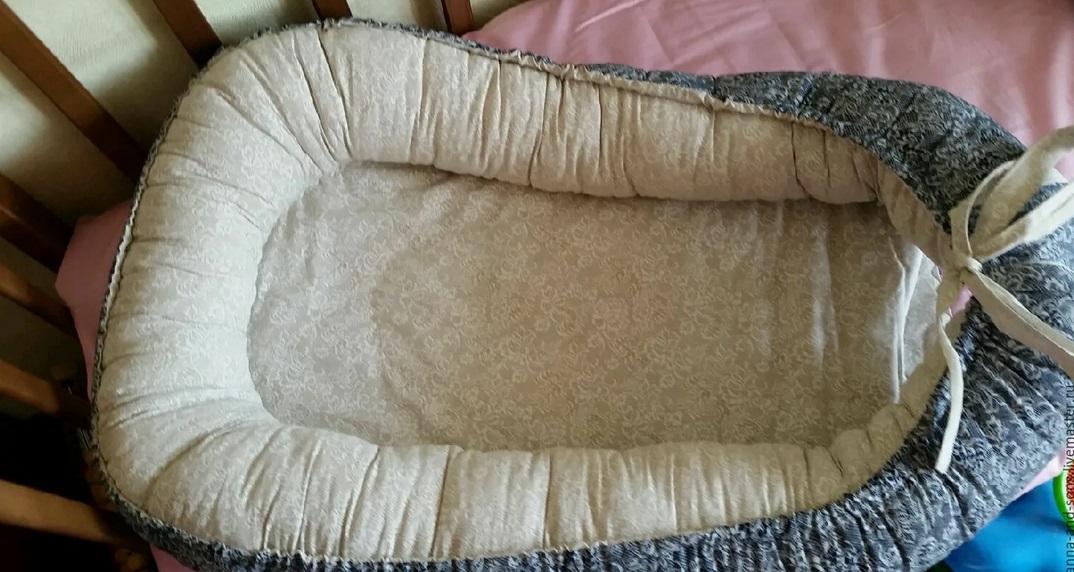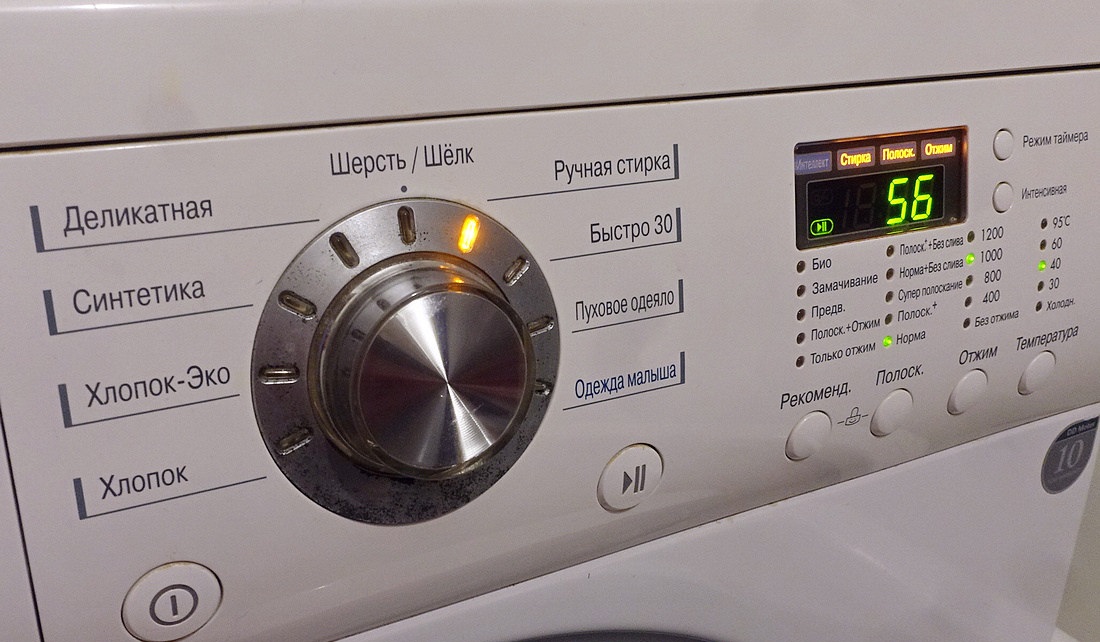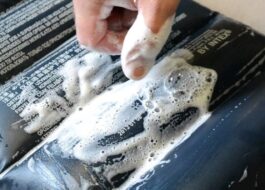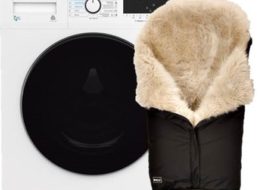Washing the cocoon “Nest”
 Today, many interesting “useful things” have been invented to help young mothers. For example, the cocoon “Nest”. This is a comfortable mattress for babies. The product exactly matches the shape of the baby’s body, making the child feel as comfortable as possible. How to properly wash the “Nest” cocoon for a newborn? Parents ask this question sooner or later. Let's figure out how to care for the product so that it does not change shape and retains its properties.
Today, many interesting “useful things” have been invented to help young mothers. For example, the cocoon “Nest”. This is a comfortable mattress for babies. The product exactly matches the shape of the baby’s body, making the child feel as comfortable as possible. How to properly wash the “Nest” cocoon for a newborn? Parents ask this question sooner or later. Let's figure out how to care for the product so that it does not change shape and retains its properties.
Features of cocoon care
Before washing the cocoon, you should clarify what material is used as “stuffing”. Be sure to study the packaging or label; it contains basic recommendations for caring for the product. Typically, manufacturers allow both automatic and manual cleaning of the nest.
When washing the cocoon, young mothers need to consider the following information:
- if the cover gets dirty, it is better to remove it and wash it separately rather than wet the entire “nest”;
- covers made of synthetics are washable in water heated to a maximum of 60°C, cotton cases can withstand temperatures up to 90-95°C;
- It is optimal to wash the cocoon completely once every 4 weeks to get rid of the dust accumulated inside;
- Before you start washing, it is important to ensure the integrity of the product;

- You cannot wash a mattress that has holes or loose seams; you must first sew up the defects;
- Before washing, be sure to shake the product outside or on the balcony to knock out dust.
“Nests” with foam rubber can only be washed by hand, and cocoons filled with synthetic fluff or holofiber can be loaded into an automatic washing machine.
That is why it is important to know what kind of filler is used when sewing the product. The acceptable cleaning method will depend on this. Inexpensive foam cocoons cannot be subjected to aggressive machine washing; they become deformed. Higher quality products will easily withstand automatic “processing”.
The new cocoon does not need to be washed after purchase. It is enough to “walk” over it with an iron or treat it with a steamer. Such “disinfecting” measures are quite enough.
Let's wash the cocoon in the machine
High-quality sewn cocoons filled with holofiber or synthetic down can be washed in an automatic washing machine. To prevent the product from becoming deformed, you must follow several recommendations. Before loading it into the washing machine, it is important to fix the tape that is used to tighten the mattress (to prevent it from stretching). This is done with a couple of stitches without a knot.
The further algorithm of actions will be as follows:
- beat the mattress to shake out dust;
- wash stains in advance, if any (for these purposes, you can use a soft brush, washing gel or baby shampoo);
- load the mattress into the washing drum;
- select the delicate or hand wash option;

- pour the product into the cuvette (it is better to give preference to liquid natural formulations without aggressive components);
- run the cycle;
- wait until the end of the program, remove the cocoon from the drum and straighten it manually.
The water temperature when washing the cocoon should not exceed 30°C, and the spin speed should not exceed 600 rpm.
Next, you can lay out the product on a horizontal surface in a well-ventilated area. It is also possible to dry the cocoon in a machine. The “nest” is placed in the drum in a circle. This will protect the mattress from deformation.
Wash in the traditional way
Hand washing is more gentle, so it is suitable for products with foam rubber. The process, not counting the soaking time, will take about 15 minutes. The algorithm of actions will be as follows:
- fill a basin with cool water;
- add cleaning agent, mix well;
- soak the “nest” in soapy water for half an hour;
- wash away all existing dirt;

- drain dirty soapy water;
- fill the basin with clean water, rinse the cocoon (the procedure is repeated until the detergent is completely removed from the material);
- let the water drain, leaving the cocoon to lie in the bath.
There is no need to twist the product, trying to squeeze it out. This will cause the nest to become deformed. You can only gently press down the cocoon with your hands to “help” the excess water drain faster.
Relieving the cocoon of moisture
Dry the cocoon naturally, laying it out on a horizontal surface. If the wash was performed without automatic spinning, it is better to place a towel under the “nest” - it will absorb the water. When the mattress stops dripping, you can remove the fabric from underneath it.
It is strictly forbidden to hang the cocoon. Under its own weight, the filler will break down, causing the product to become deformed. Therefore, clotheslines in this case are taboo.
Do not dry the “nest” on an open balcony or on the street. This way the children's mattress will collect a lot of dust. In addition, there is a high probability that the fabric will lose its brightness under the influence of ultraviolet radiation. The best option is to dry the cocoon in a well-ventilated area. The humidity level in the apartment should not be high. At room temperature the product will dry in 48 hours. During this time, it is recommended to turn over and “fluff” the mattress.
Interesting:
Reader comments
- Share your opinion - leave a comment





















Add a comment